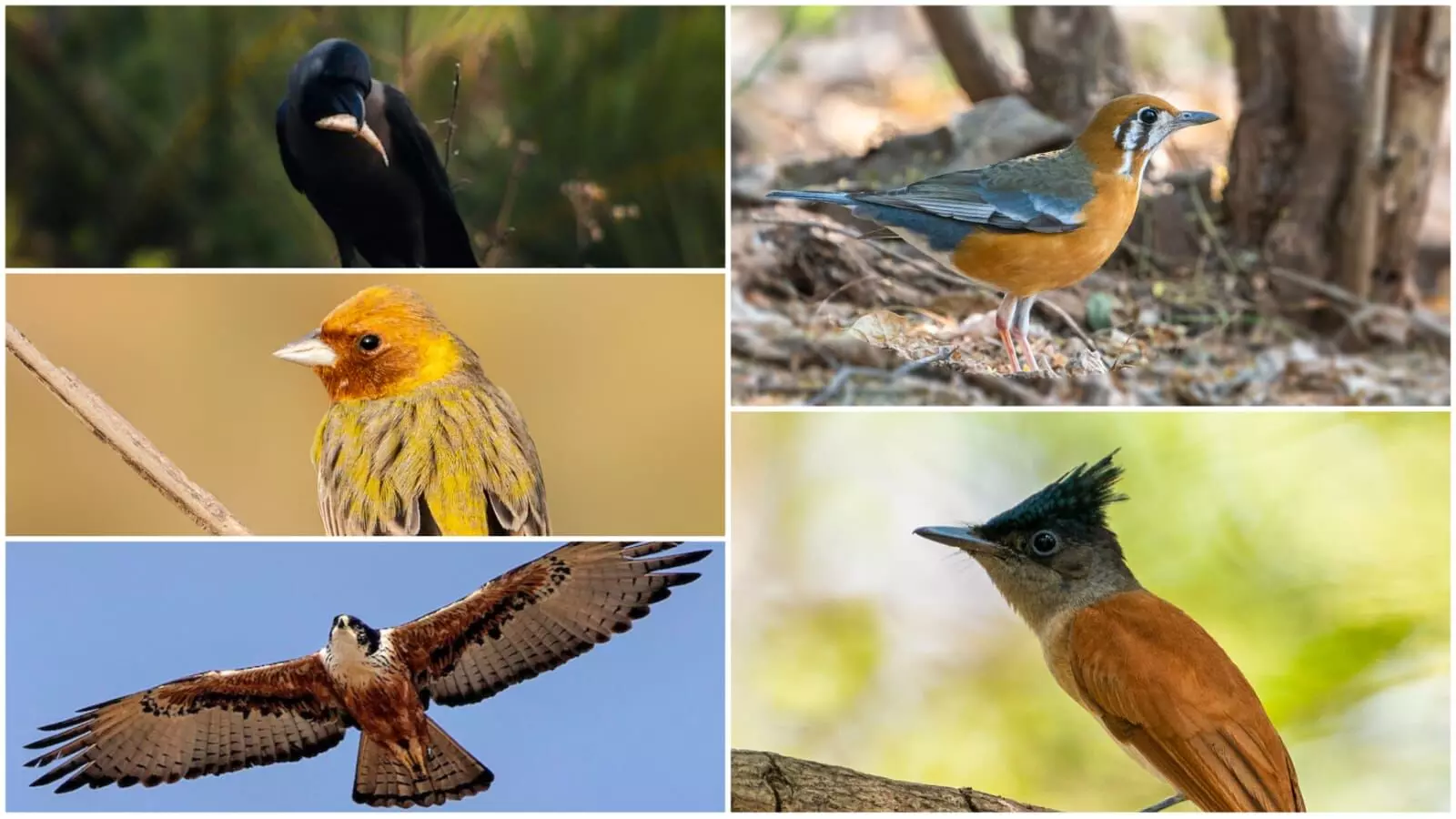Great Backyard Bird Count 2022 identifies more than 200 species in TS, AP
Approximately 246 species of birds were recorded in Telangana and more than 270 species in Andhra Pradesh between 18 and 21 February as part of the GBBC.
By Amrutha Kosuru
Hyderabad: Sanshitha, a class VIII student from Smart School, Palasa, headed out with a pair of binoculars and her father's mobile phone on Sunday to find and record birds. After a long walk, Sanshitha along with 50 other students reached Pedha Cheruvu in Palasa. While she initially found it difficult to spot birds in the lake, eventually she spotted several.
"I spotted an Indian Spot-Billed Duck, Purple Heron, Black-winged Stilt, and a common Myna," Sanshitha said excitedly. She was recording birds as part of the annual Great Backyard Bird Count (GBBC), a citizen-based initiative that involves people recording birds in their homes and surroundings.
Sanshitha said she could not have done this without her instructor Sri Chakra Pranav and her school teachers and director Ramesh. "I didn't know there were so many birds near my house and school," she said.
Approximately 246 species of birds were recorded in Telangana and more than 270 species in Andhra Pradesh between 18 and 21 February as part of the GBBC. The Indian Institute of Science Education and Research (IISER), Mangalam campus, was one of the top hot spots in AP this year where more than 100 species of birds have been recorded.
Citizens have to take photos of the birds and upload them on the e-bird data portal. The data is verified and a final report will be published by the Bird Count India Collective after a few days.
Raja Bandi, the GBBC AP co-ordinator and citizen science coordinator in IISER, explained that anyone who identifies a bird can upload its details on the e-bird application. "The data of birds thus obtained is used by scientists for various search purposes," he explained.
He added, "It is particularly nice to see NGOs stepping up and involving students in GBBC. We have seen more than 100 participants throughout the state."
Most of the species were recorded in Chittoor followed by East Godavari, Nellore, Vizag, Anantapur, and West Godavari. Kadapa was the least explored during this GBBC.
"Like the Western ghats, the Eastern ghats of Andhra Pradesh and the surrounding forests of the Eastern ghats are least explored. Unfortunately, in AP science is ignored and so is conservation of nature. With these events, we can connect people with nature whilst documenting the avian diversity," said Mr. Bandi.
Sri Chakara Pranav, the programme manager at East Coast Conservation Team (ECCT) and Green Paw, organised the GBBC in Visakhapatnam, Srikakulam, and Vizianagaram district. Mr. Pranav pointed out that surveying birds will help understand their migratory patterns. "We can also help in ascertaining what kind of conservation steps need to be taken," he said.
Mr. Pranav, who took 52 students from Palasa on a bird walk, said it was a delight to see so many students cover the event with much excitement. "I hope more students get involved in such activities so that they also learn about the environment in this way," he said.
Meanwhile, Hyderabad Birding Pals (HBP) organised the event in Telangana. Most species were recorded in Medak, Rangareddy, Khammam, and Hyderabad. Mahbubnagar was the least explored area.
HBP general secretary Rajeev Khandelwal said they saw participants from various age groups this year.
"Indian Paradise Fly Catcher, Red Hunted Bunting,water birds and ducks and Orange Headed Thrushare some beautiful and intresting birds that we recorded near Ameenpur lake and Manjeera in Sangareddy," he said.